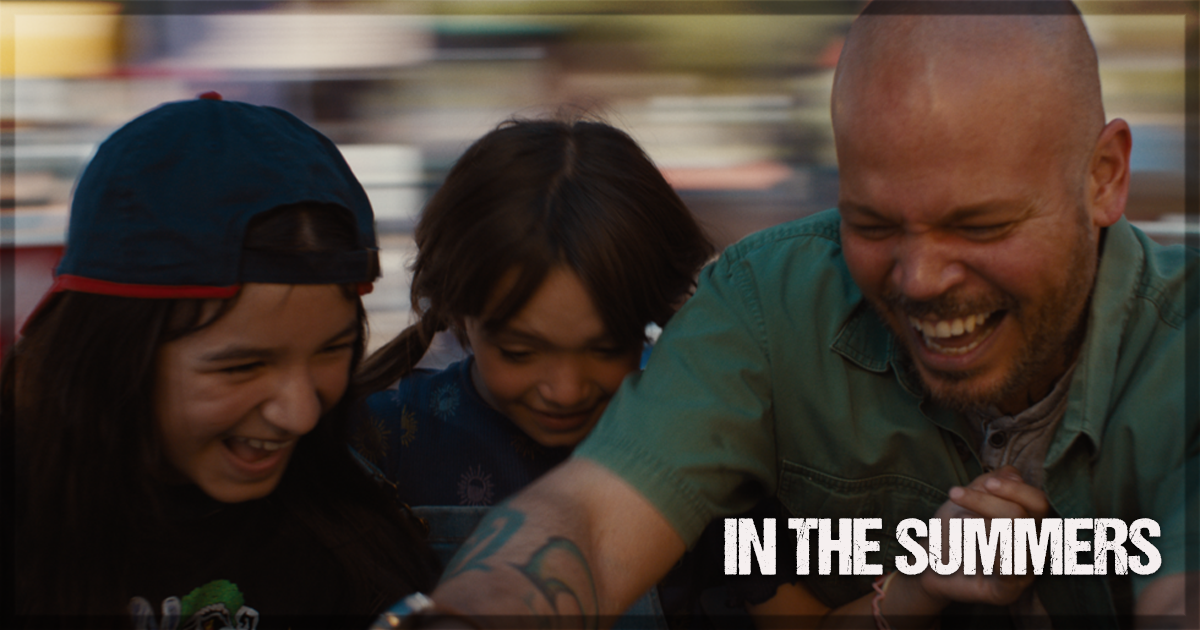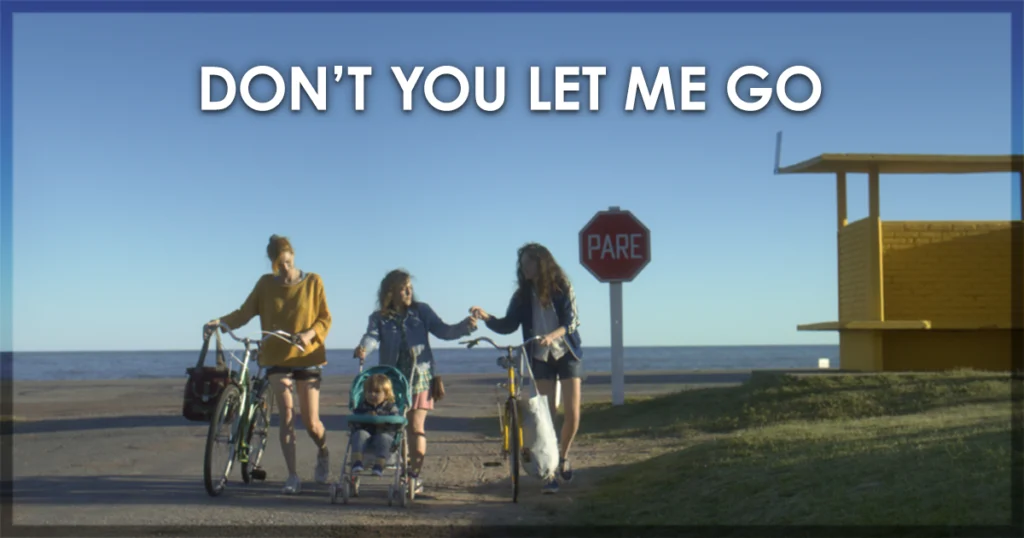Musicians have a long history of migrating from recording albums to acting in pictures. We could appoint Cher in Moonstruck (1987), which gave her an Academy Award, Barbra Streisand with Funny Girl (1968), which also gave her the Academy Award, and Eminem with 8 Mile (2003). It is a media crossover that allows those artists to explore their boundaries and show the public a different persona. Adding to the list, we have Puerto Rican rapper Residente. He is known for socially engaged and political lyrics. One of his main songs is This is Not America, a direct response to Childish Gambino’s This is America. His lyrics approach the US involvement with Coup d’Etats in Latin American countries, and it features a music video flooded with political references. Showing his versatility, Residente stars in Alessandra Lacorazza’s In The Summers.
The musician plays Vincente, an absent father who gets to see his daughters Eva (Luciana Elisa Quinonez, Allison Salinas & Sasha Calle) and Violeta (Dreya Castillo, Kimaya Thais & Lio Mehiel) during the summer breaks in Las Cruces, New Mexico. The film follows a structure similar to that of Barry Jenkins’ Academy Award winner Moonlight. Lacorazza divides the story into four chapters. Each contains a time jump, featuring new elements to the daughters’ personalities and arc. Unlike other musicians turned actors, Vincente is not an aspiring musician. He is a physics teacher who deals with alcoholism and has a troubled personality. He is a loving father, but his substance abuse makes his violent behaviors unpredictable.
The pool reflects something more in In The Summers
Throughout the chapters, the audience follows their development as human beings, but mainly reacting to the lack of presence from their father. Alongside the father and the daughters, the family’s pool is another meaningful element of the nuclear family. It reflects the attention Vincente directs to the kids, while in Chapter I, the pool is clean and ready to play, contrasting to Chapter IV, when it is empty and turned into a playground for the youngest sister, Natalia. In the middle part, the pool is dirty and half-empty, reflecting Vincente’s existence, a father lost in his insecurities, abuses, and lack of commitment in his relationships.
As the Chapter changes, so does Violeta’s personality
Furthermore, Lacorazza’s script is sharp in playing with the daughter’s personalities and how the director swings them. In Chapter I, Eva is a happy child who looks enthusiastic about life and Las Cruces, while Violeta is a teen who is insecure about their skin. However, in the last part, it swifts completely. Violeta finds out who they are truthfully. And Eva’s enthusiasm about life disappears somewhere on the road. Her father and the community underestimated Eva growing up, even feeling left out by the close people around them, such as Carmen, Vincente’s friend since infancy. The feeling of rejection is not only present in Eva’s actions, a lone ranger around town who looks for being the furthest she can from the roots. But the marvelous performance by Sasha Calle delivers a depth that brings all the emotion needed for that character.
Wide-shot compositions portray emotional distance
Besides the sharp script, Lacorazza’s directing uses wide-shot compositions to portray the characters’ inner feelings. An example is when they go sliding on the sand while they walk to the top, they are placed carefully in a stairs format, ranging from Vincente, the patriarch, down to Nicole, the youngest. The characters are often placed in a wide range to capture the whole immensity of their emotional distance. Even the slightest visual details, such as the imagery in the chapter transitions, feature crucial information to the narrative. Every transition captures a desk with flowers, candles, and family pictures. As soon as it moves forward, the desk gains more photos and flowers. It may sound like the tiniest details, but it introduces where those characters were before heading to Las Cruces small airport.
In The Summers may not have an immediate impact on you, but it gains more significance the more you think about it. It feels very personal to the director. It has an easily recognizable feeling: the rejection. Eva has the constant sentiment of not being treated as she deserves. The community sees her as a less valuable version of Violeta, labeled as the intelligent sister enrolled in a fancy college. Violeta feels distant because of her identity and sexuality in an immigrant and traditional community.
In the last scene of In The Summers, Eva embraces Vincente in a heartfelt hug. It feels almost like she acknowledges he is trying to be better, and she forgives him for all of the quiet acts of violence he caused her. Soon, as she and Violeta touch their hands and await the small plane to return to California, they reflect on the absence. And we reflect upon a poetic, raw, and beautiful film that grows with time.
In the Summers recently screened at the Tribeca Film Festival.
Learn more about the movie at the Tribeca site for the title.
You might also like…
‘Don’t You Let Me Go’ Review: Uruguayan Film About Grief


